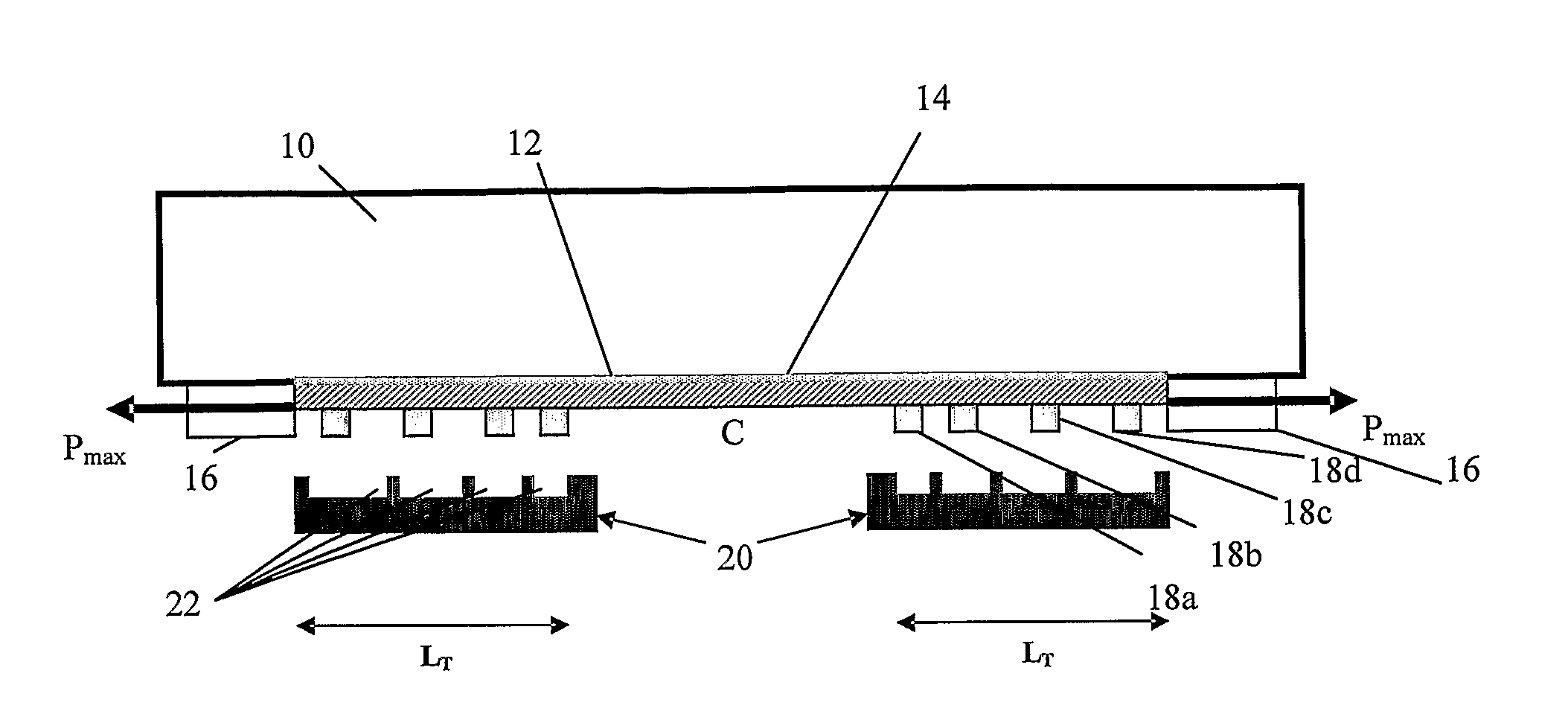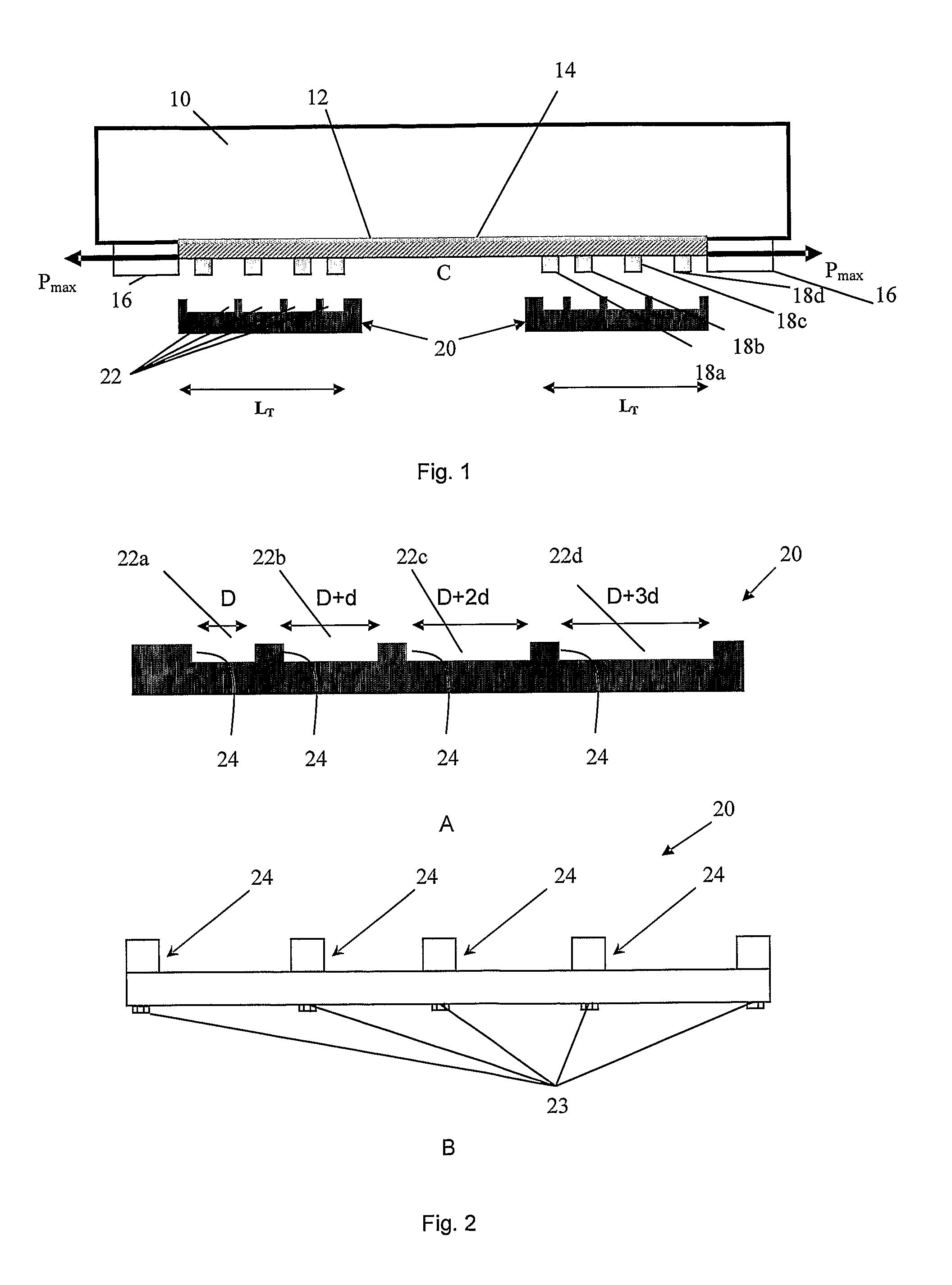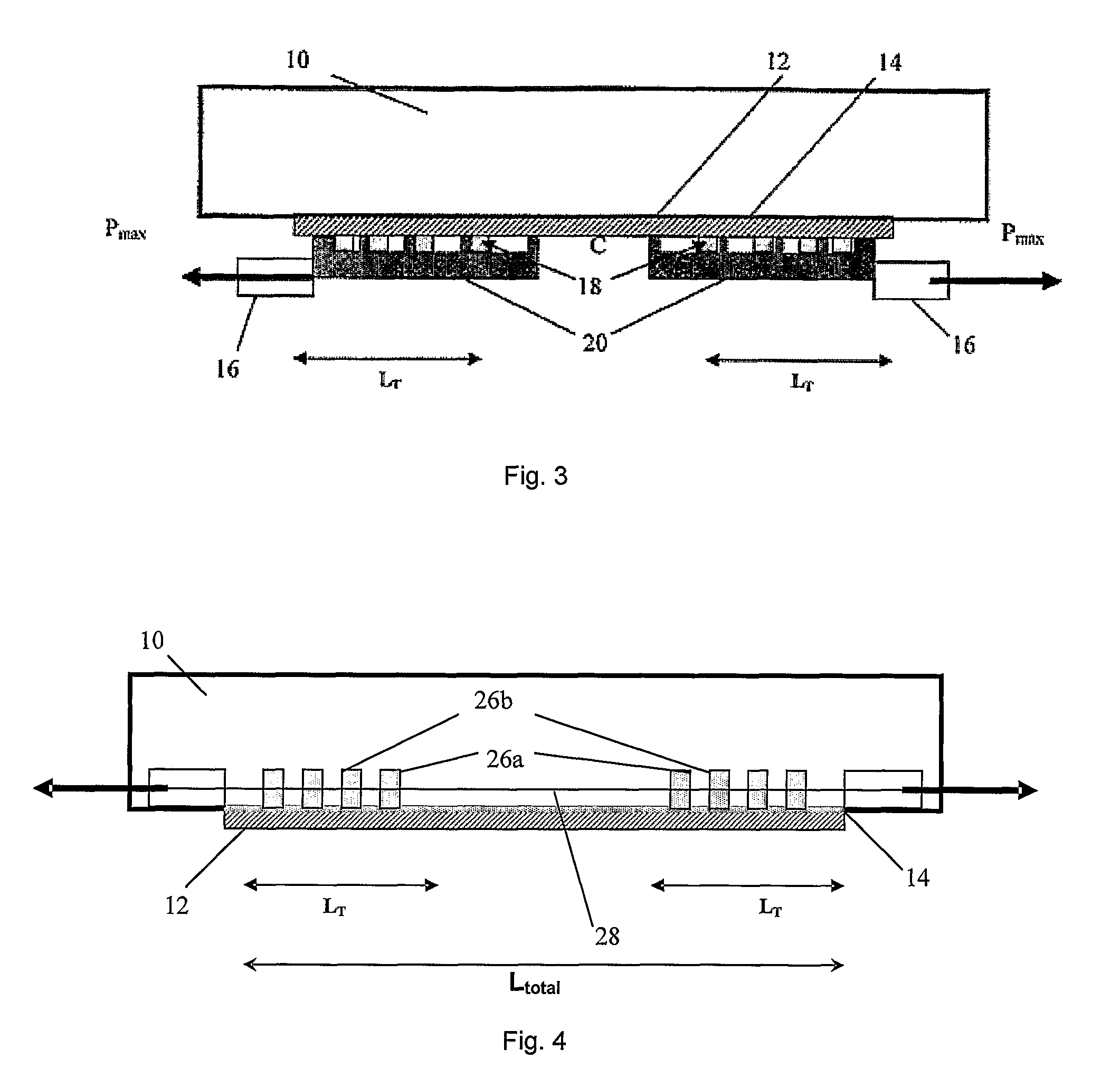Method for applying a reinforced composite material to a structural member
a technology of reinforced composite materials and structural elements, applied in the direction of structural elements, paper/cardboard containers, lamination, etc., to achieve the effect of reducing the supporting function of such elements, increasing the working load of structures, and altering the structural form
- Summary
- Abstract
- Description
- Claims
- Application Information
AI Technical Summary
Benefits of technology
Problems solved by technology
Method used
Image
Examples
Embodiment Construction
[0043]FIG. 1 shows a structural member 10, in the form of a beam constituting part of the span of a bridge for example. An FRP laminate 12 in the form of a lamellar strip, such as a pre-cured CFRP laminate, has been applied to the structural member by coating a surface of the structural member 10 with a continuous or discontinuous layer of curable adhesive 14 and pressing the FRP laminate 12 against the adhesive-coated surface. The FRP laminate 12 is applied to the bottom surface of the structural member 10 so that its fibres are parallel to the structural member's longitudinal axis.
[0044]A pre-stressing force, Pmax is then applied to each end of the FRP laminate 12 using a pre-stressing device 16 comprising two lockable units located in the vicinity of the ends of the FRP laminate 12 and attached to the structural member 10 for example. The exact degree of pre-stressing may be measured with strain gauges positioned on the FRP laminate 12, or by means of an integral force measuring ...
PUM
| Property | Measurement | Unit |
|---|---|---|
| shear stresses | aaaaa | aaaaa |
| shear stresses | aaaaa | aaaaa |
| length | aaaaa | aaaaa |
Abstract
Description
Claims
Application Information
 Login to View More
Login to View More - R&D
- Intellectual Property
- Life Sciences
- Materials
- Tech Scout
- Unparalleled Data Quality
- Higher Quality Content
- 60% Fewer Hallucinations
Browse by: Latest US Patents, China's latest patents, Technical Efficacy Thesaurus, Application Domain, Technology Topic, Popular Technical Reports.
© 2025 PatSnap. All rights reserved.Legal|Privacy policy|Modern Slavery Act Transparency Statement|Sitemap|About US| Contact US: help@patsnap.com



